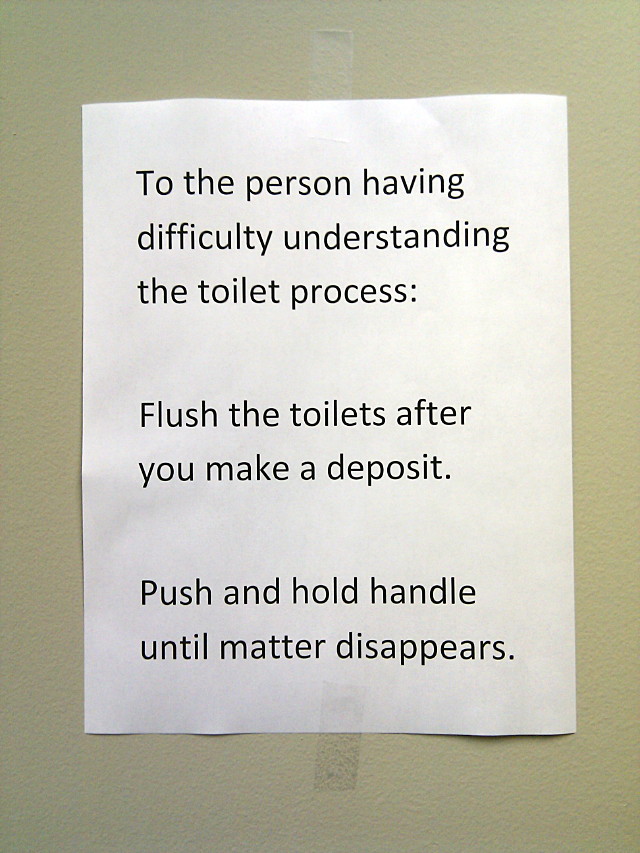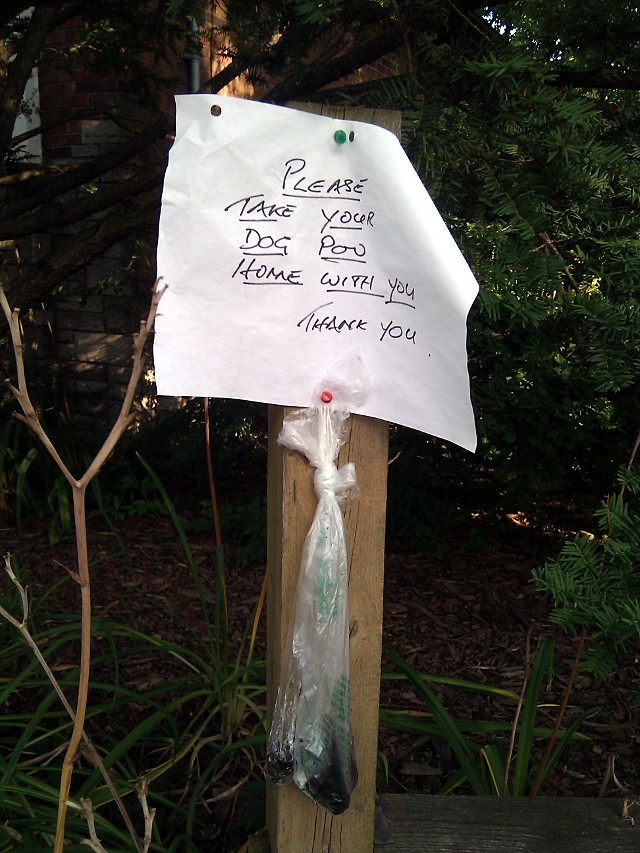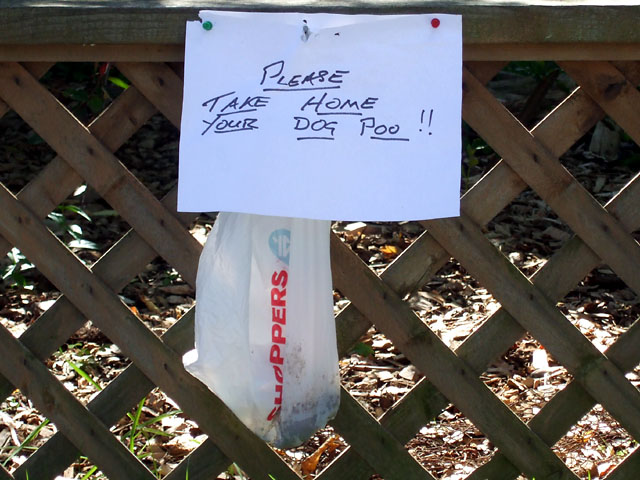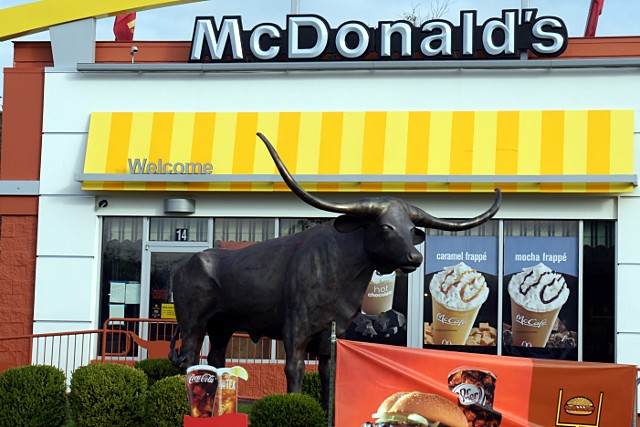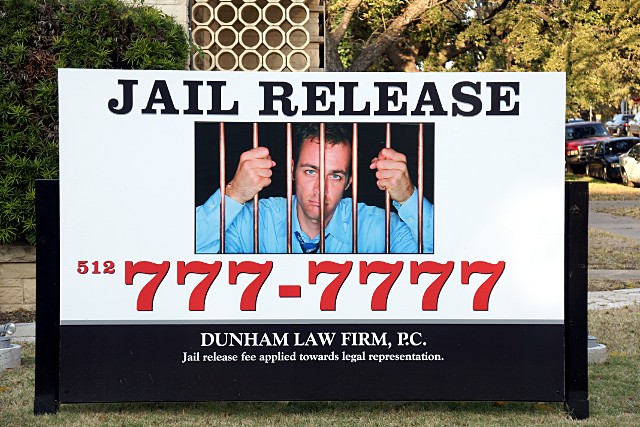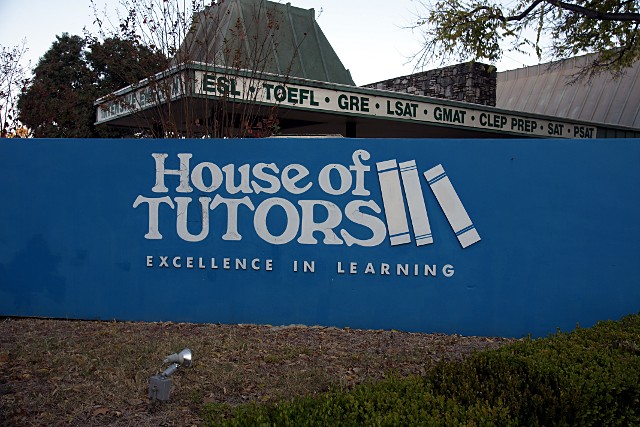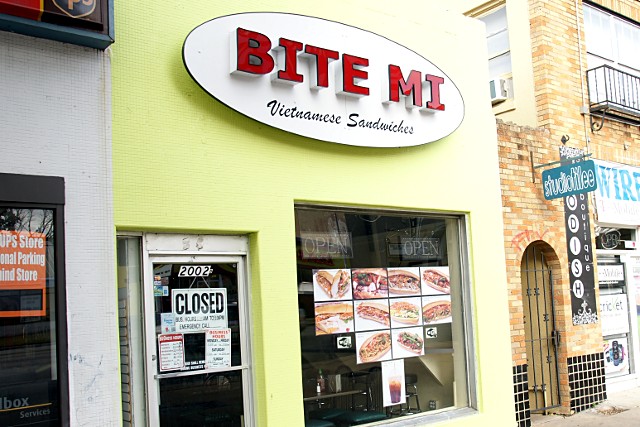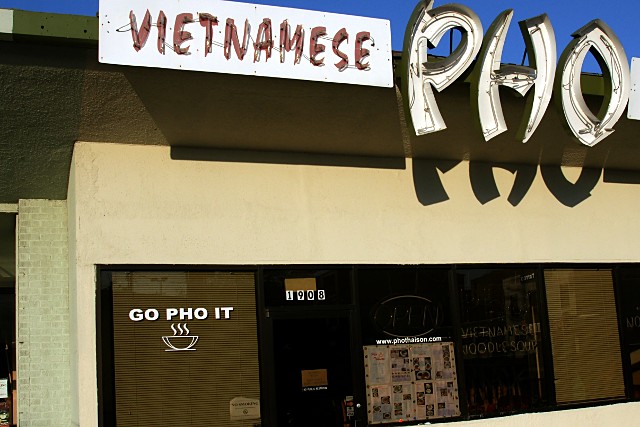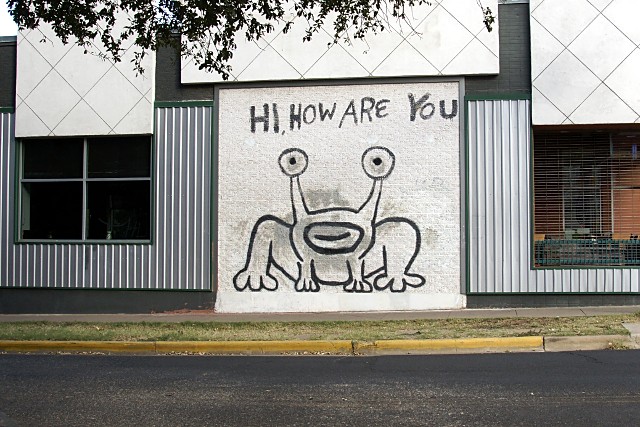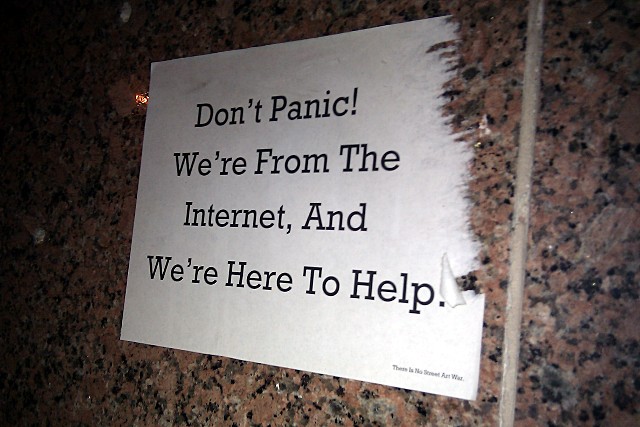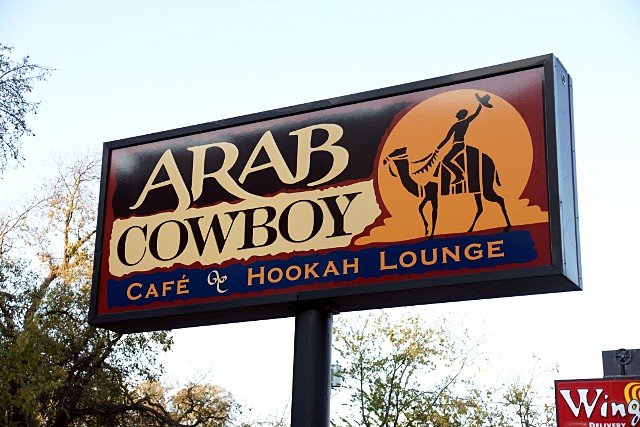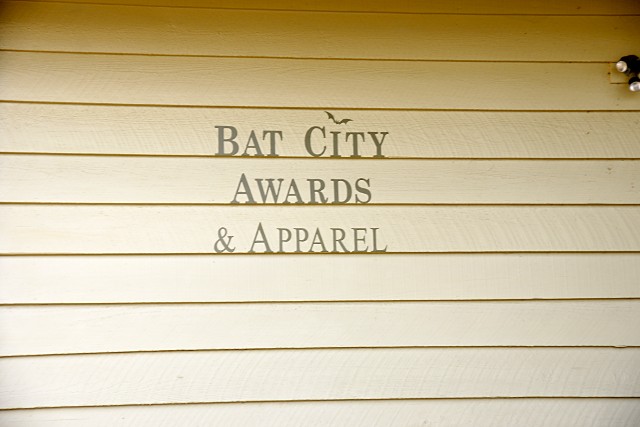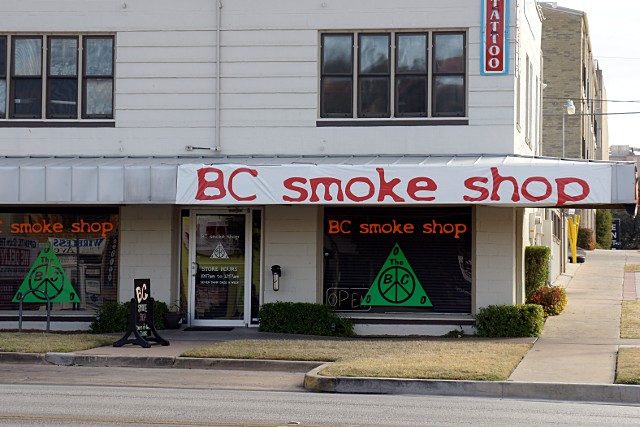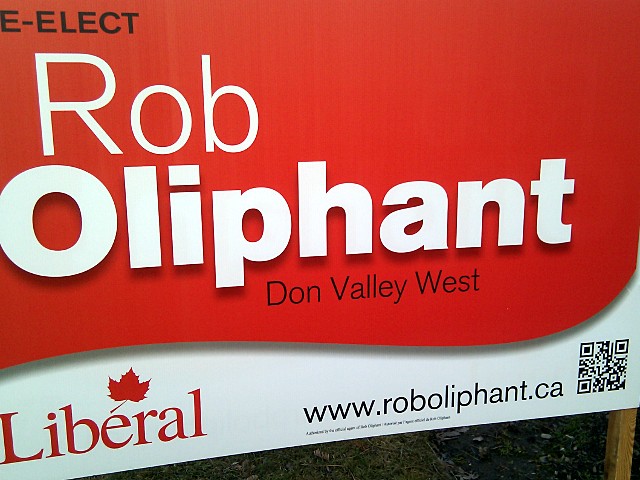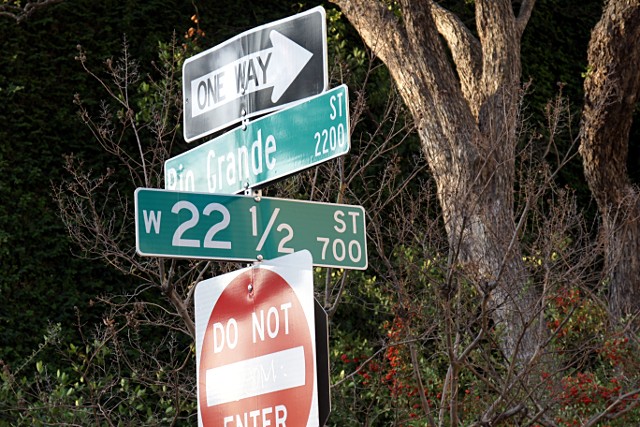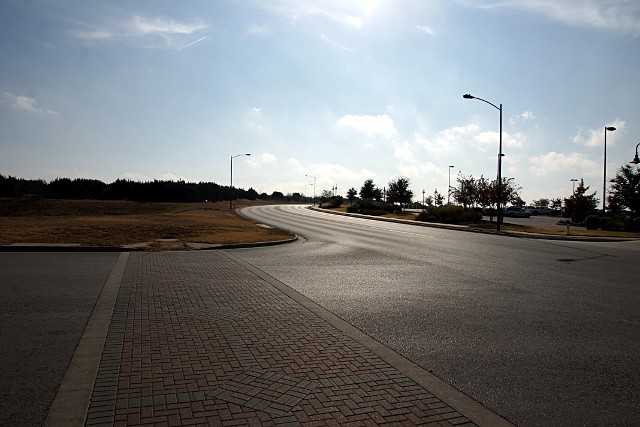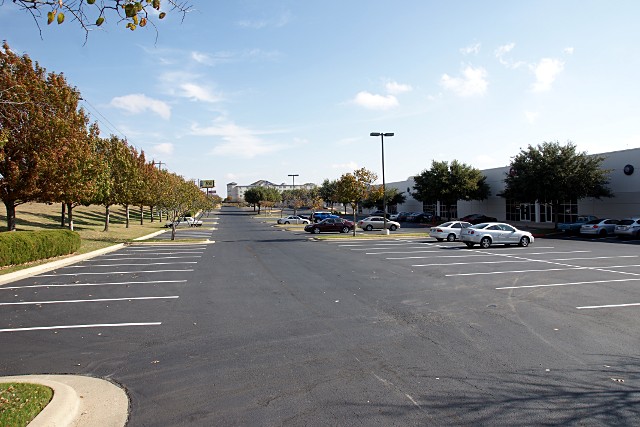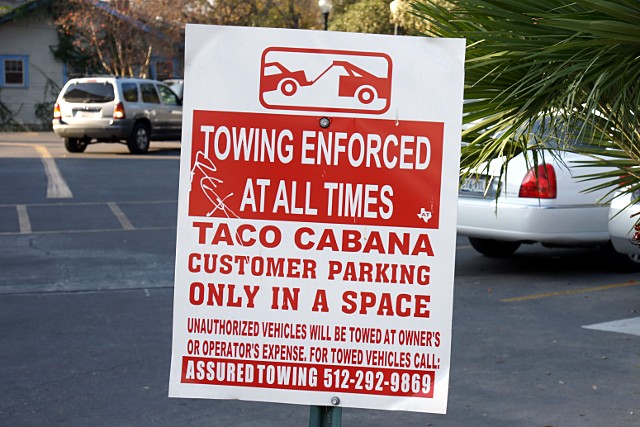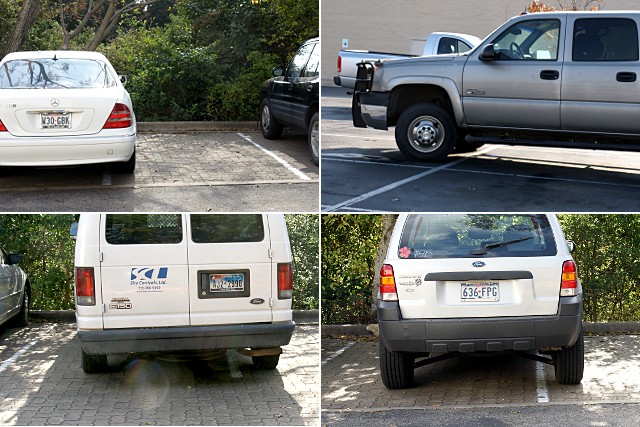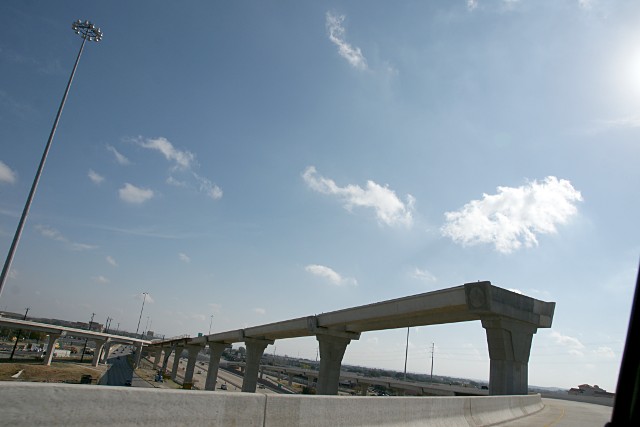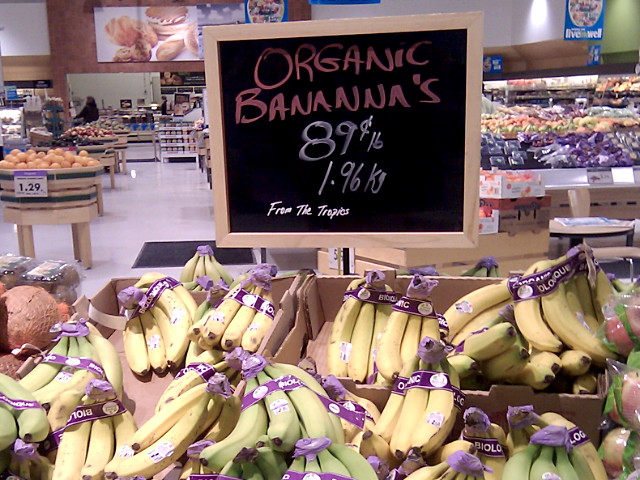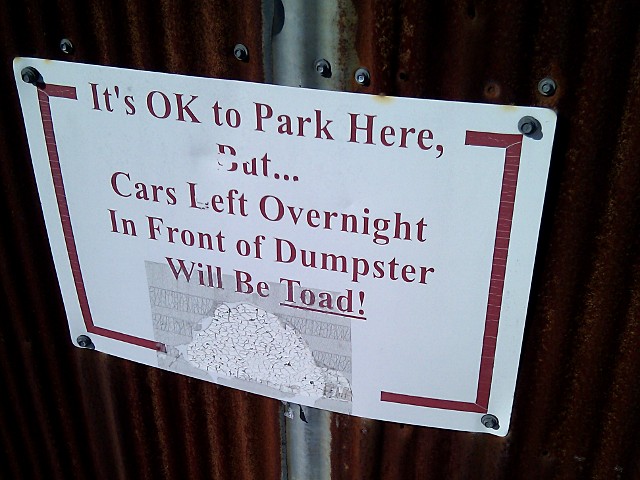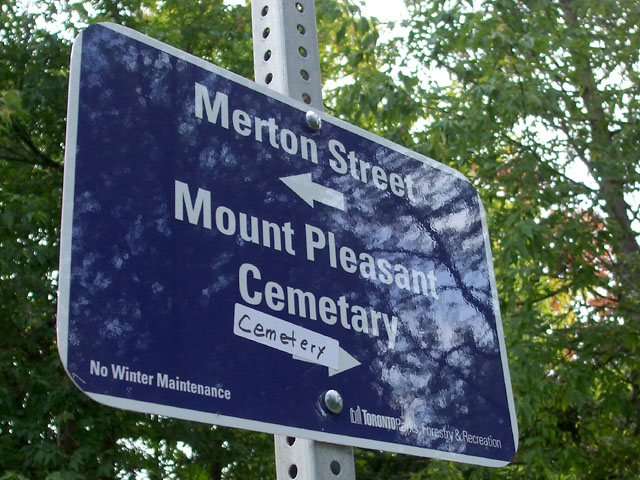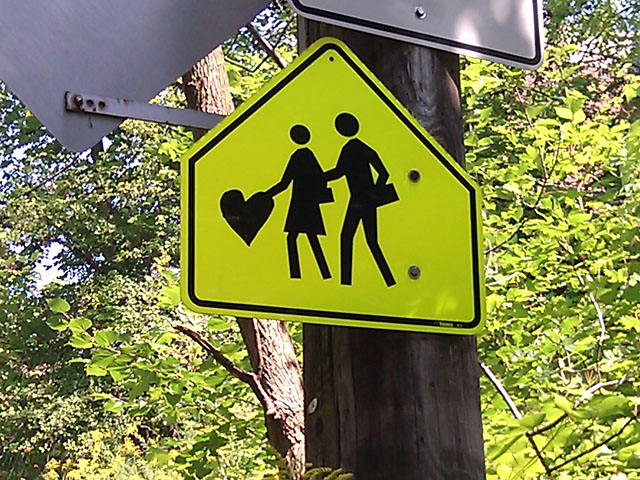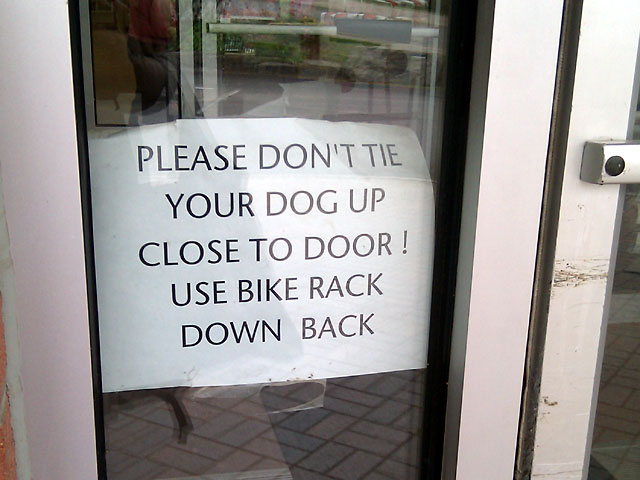You know I love signs. Many of the best ones express one person’s frustration at something that’s beyond his or her control. More often than you’d think, this relates to another person’s (or dog’s) bodily functions. I get such perverse pleasure when I walk into a new (to me) public washroom and see a sign like this. I can’t help but wonder how long and often the sign-writer has had to put up with the problem before going back to his desk, selecting a 44-point font in Word, printing out a shaming notice, and taping it up outside the stalls. But I’m even more curious about whether shaming notices actually work. Anecdotal evidence would say that they don’t, but I can’t tell you how many times I’ve wanted to track down the person who made one of these signs and ask if it generated a concrete result beyond the short-term satisfaction of calling someone out for anti-social behaviour.
Tag: signs
This is your turd and final warning
You’ve got to admire the homeowner who believes that non-poop-and-scoopers will be cured by a bit of passive-aggressive public humiliation. You’ve got to admire the homeowner who presents a wayward bag of poop to the perpetrator for removal. You’ve got to admire the homeowner who concludes his turd-removal directive with an anticipatory “thank you.” But most of all, you’ve got to admire a homeowner whose style, persistence, and faith in dog-walking humanity hasn’t changed in the three years since I first saw a bag of dog poop nailed to this fence:
Austin miscellany part 2: City of signs
Regular readers of this blog know that I love signs. I could read, interpret, admire, ridicule, and wonder about them all day long. So naturally, when I went to Austin, I read, interpreted, admired, ridiculed, and wondered about a whole lot of new signs that we just don’t see in Toronto.
First off, Texans really like their longhorns. Up here, we think of them adorning the hoods of Cadillacs, but in Texas, they adorn just about everything, including the Golden Arches.
I saw this poor schmuck on billboards around the city on several occasions, so was a little amused to walk by Dunham Law Firm’s downtown office one day. There’s an annoying TV commercial too, which I was lucky enough to see only twice during the week.
I was staying near the University of Texas, and there were many punnily named businesses catering to students:
Austinites are so friendly that even the walls make small talk while you’re passing by:
Even the Internet—home to anonymous trolls, unfettered outrage, and random aggression—is friendly in Austin:
Can’t we all just get along?
Score one for the name, and another for the logo:
A small subsidiary of Wayne Enterprises:
And finally, Canada may not be high on the minds of most Texans on any given day, but parts of Canada do have a certain reputation:
Rob Oliphant: MP, tech trailblazer?
This is the first time I’ve spotted a QR code on an election sign, right down there in the bottom right corner. Rob Oliphant, Liberal candidate for Don Valley West, has them on all of his signs, though I haven’t seen them on the signs for other Liberal candidates. Are any other candidates around the city using QR codes? I was hoping that this one would be a direct link to Oliphant’s views on UBB, mobile competition, digital law, or something else that might be of particular interest to the kind of person who would use a QR code, but it just links to the main page of his web site. Still, kudos to him (or someone on his campaign team) for thinking to put the code on his signs.
Austin miscellany part 1
I’d written this post before I took my winter blogging break, but never quite got around to posting it. So, a few months late, here’s a random collection of sights I saw in Austin last year. There’s one more of these, and if I’m feeling energetic, I may eventually get around to that post about Calgary that I promised a year and a half ago.
The big problem with giving streets numbers instead of names is that occasionally, you need to squeeze in an additional street and are left with a dilemma: do you renumber all of the streets above it or come up with a new name? In Austin, there are a few of these half-streets downtown. They’re all just a few blocks long and thus don’t intersect whichever main street necessary to qualify as a full street.
From a Torontonian’s perspective, the transportation infrastructure of Austin outside of downtown seems to be overbuilt. As in any North American city, there’s lots of room for cars, but in Austin, everything seems to be a big four-lane road leading to lots of huge, three-quarters-empty parking lots. The picture below was taken just off a major highway at the T-intersection of two broad four-lane roads. In the ten minutes I was walking around the intersection mid-morning on a Friday, maybe three cars went past. The mall parking lot at the top of the T had about a dozen cars in it with room for a hundred and fifty more. My quiet two-lane residential street in east-end Toronto sees way more traffic than this crossroads.
Despite the overbuilt car infrastructure, there are some nice touches for pedestrians. Many crossings receive a different surface treatment (as the bricks above) to alert drivers, and many curb cuts are textured to provide grip and warning to pedestrians that they’re entering a roadway. Still, despite the fine detail on the road crossing here, there isn’t a sidewalk in sight on the other side.
Here’s just one example of the many empty parking lots I encountered on my trip, this one at a business park on Friday morning. Not all parking lots were this empty, but it was common enough to make me wonder why parking was so abundant.
I also didn’t understand this sign, which I saw at the local Taco Cabana on my first day in Austin:
I thought it was strange that the sign carried an admonition to park “only in a space,” but chalked it up to poor writing or a bad translation. However, after spending a couple of days in the city, I understood the reason:
As far as I can tell, no one in Austin can park. Every parking lot I visited abounded with cars taking up two or more spaces. Straddling a line was the most common infraction, but it wasn’t at all rare to see cars parked diagonally across spaces, in the lot aisles, blocking doors or curb cuts at building entrances, in the middle of crosswalks, and just generally ignoring all of the standard rules of conduct in parking lots. Maybe this is why parking seemed so abundant: city planners order up three times as many spots as necessary at any given building, figuring that each car is going to take up two or three spaces.
Another oddity was the number of flyovers, ramps, overpasses, and underpasses that, like this one, just seemed to end somewhat prematurely with no sign of ongoing construction. It looks like they just build a section and then wait months or years until money is available to build the next section. It seems like a highly inefficient approach to infrastructure.
This being Texas, people take their trophies roadkill very seriously:
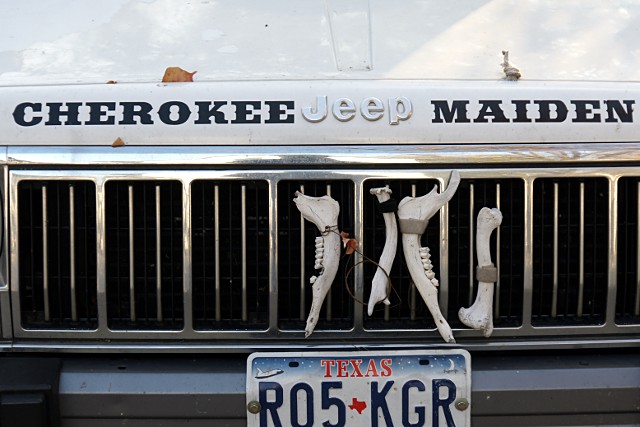
Who's minnding the store?
The problem with hand-written signs is that there’s no spell-check to fall back on. This sign in a local Loblaws, which combined two errors in one word, was the very first thing customers would see upon entering the store a couple of weeks ago. Spelling flames aside, it created the impression that the people there just don’t care: whoever wrote the sign couldn’t be bothered to check the spelling of a common word and either no one else noticed or they didn’t say anything. It certainly makes me even warier than usual when it comes to trusting that the food isn’t mouldy or short-dated.
Which way to Mount Pleasant Sema…Seme…Cema…Ceme…burial ground?
This wayfinding sign recently appeared on the Belt Line, just outside the entrance to Mount Pleasant Cemetery. At least the arrow, complete with hand-lettered spelling correction, is pointing in the right direction, unlike some other signs I could mention. There’s an old saying in woodworking: measure twice, cut once. Surely there’s a similar axiom in the sign-making business.
A cyclist's best friend?
So this is what it’s like to be an afterthought. I know that the folks at the Foodland in Millbrook mean well, supplying a bike rack at the store and all (“down back” is still fairly close to the door), but if dogs need a place to sit where they’re out of people’s way, why not provide a dog-specific hitch that doesn’t take space away from cyclists?
(And for the record, the bike rack was bereft of both bikes and dogs when I was at the store on Sunday morning.)
